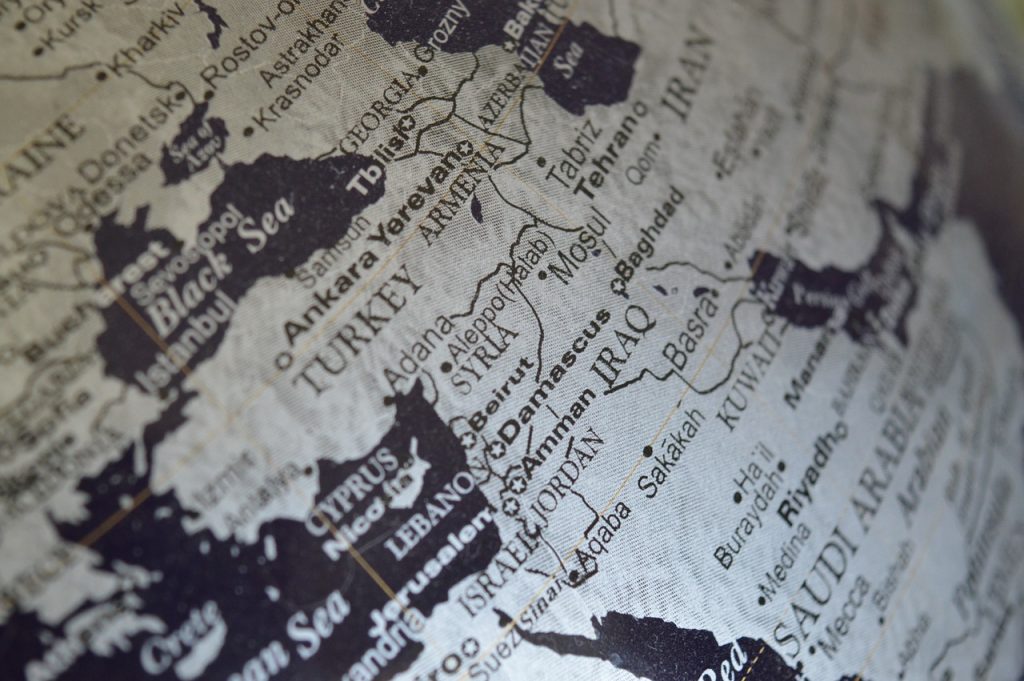All across the world, from Catalonia to Chile to Hong Kong, citizens are taking to the streets in protest. Meanwhile, in the Middle East, large scale protests in Iraq and Lebanon have been overshadowed. These protests, which began in October, have largely been attributed to anger over economic difficulties and Iranian interference. In the two months of protests in Iraq, hundreds of thousands have participated in the demonstrations that have left over 300 dead and thousands more wounded (Bunyan 2019).
In Iraq, law enforcement has responded by instituting curfews and violently opposing the protesters. In their latest attempts to quell the anger, the Iraqi government has promised to create new jobs for citizens. Still, many see this conflict as having no end in sight without the government making concessions to the protesters. Interestingly enough, support for the Iraqi government has long been supplied by the Shia majority, however, many of the recent protests have been taking place in Shia majority sections of the country (Qassim 2019). In addition, many of the protesters have openly expressed their hatred for Iran, who they see as controlling many of the actions their government takes (Qassim 2019).
The protests taking place in Lebanon have seen an entirely different response than those in Iraq. Lebanon is also facing protests from its Shiite majority, but they have responded peacefully to the demonstrators. While they are showing signs that they are willing to meet the protesters’ demands, they also seem to be trying their best to downplay and wait out the demonstrations (Qassim 2019).
Many have seen these protests as similar to those that took place in 2011, also known as the Arab Spring. At that time, Syria, Tunisia, Egypt and other Arab countries faced large scale demonstrations in an attempt to gain more social and political freedoms. While these revolutions led to regime changes in many of the countries and concessions from the governments, questions still linger about the success of the Arab Spring (History.com 2018). In the years following the Arab Spring, many of these Middle Eastern countries experienced a period of turmoil and political upheaval which returned their countries to a similar situation as before the uprisings took place. In many cases, the political freedoms which had been secured through these demonstrations were taken away as governments tried to regain control over their people.
The protests taking place in Lebanon and Iraq have drawn many similarities to those in 2011. Most notably, these protests have incorporated the use of social media, which had been the primary mode of communication in 2011. On social media, there is a striking similarity to 2011, with many of the very same slogans being used (Qassim 2019). In Iraq, the government cracked down on its use by taking down the internet at times. Even then, the Iraqi’s have found innovative ways to spread their messages, similar to what was seen in Egypt during its own protests. These protests also seem to have learned from the former protests, as they have deployed many of the same strategies to block law enforcement from interrupting and dispersing protesters (Momani 2019).
Just as there are similarities between these protests and those in 2011, so too are there differences. Most notably, when the protests occurred in 2011, many citizens were happy to see their Prime Minister or President removed from power as a sign of significant change in the country. Now, however, these current protesters seem to view this removal from office as insignificant and not enough to resolve the current problems they see (Momani 2019). Instead, these protesters are much more interested in completely altering the regime.
While these protests have been taking place in Iraq and Lebanon, Iran has been keeping an eye on the entire situation. In recent years, Iran has been trying its best to win favor with other Middle Eastern countries in order to push forward their own interests within the region (Qassim 2019). Not only do these protests make them nervous of losing popularity, but also they are wary that it may insight protests within Iran. In fact, just last week protests erupted in more than 100 cities in Iran due to rising fuel prices.
These protests in the Middle East have understandably raised some eyebrows. Many are beginning to wonder, is this a second Arab Spring? Regardless, this conversation is very relevant for a number of reasons, including the possible regime changes that might occur. Personally, I am most interested to see what outcomes might result from these protests. Will these protests yield better long term results than those in 2011? Or will they cycle back into their old ways?
Works Cited
Abdul-zahra, Qassim. “Protests in Iraq Reveal a Long-Simmering Anger at Iran.” AP NEWS, Associated Press, 6 Nov. 2019, apnews.com/13c1f4d0ffdd4908ba340abf9631a3cb.
Bunyan, Rachael. “Iraq Protests: What Do the Protesters Want?” Time, Time, 13 Nov. 2019, time.com/5723831/iraq-protests/.
History.com Editors. “Arab Spring.” History.com, A&E Television Networks, 10 Jan. 2018, www.history.com/topics/middle-east/arab-spring.
Momani, Bessma. “Why Iran Is Threatened by Protests in Lebanon and Iraq.” Time, Time, 7 Nov. 2019, time.com/5721115/lebanon-iraq-protests-iran/.
“Rises in the Price of Petrol Are Fuelling Unrest in Iran.” The Economist, The Economist Newspaper, 21 Nov. 2019, www.economist.com/middle-east-and-africa/2019/11/23/ rises-in-the-price-of-petrol-are-fuelling-unrest-in-iran.
Link to picture used:
https://pixabay.com/photos/syria-middle-east-map-globe-iraq-1034467/


Overall I thought this was a very interesting blog post. The parallels between the current protests seen around the world and the Arab Spring was very helpful in my understanding of the current protests. By comparing them to a past event, the Arab Spring, I was able to better grasp the severity and the intensity of the current protests happening in Lebanon and Iraq. Even comparing relatively minor aspects between the two such as the use of social media gave me a better understanding of the situations in Lebanon and Iraq. I also think that your point about the people in these protests not only want to see the removal of their leader but also structural changes to the regime was a very enlightening point to make about the situation. It again speaks to the relevancy of the topic, as well as, the severity of the protests. I was slightly confused in the beginning of the post as to what the topic was due to the overload of information. However, as I kept reading it became very apparent as to what the topic was about. On a final note, I really enjoyed your question at the end of the post. I feel like your question(s) really helped to summarize the post as well as make me think beyond the post. Overall, I liked it a lot.